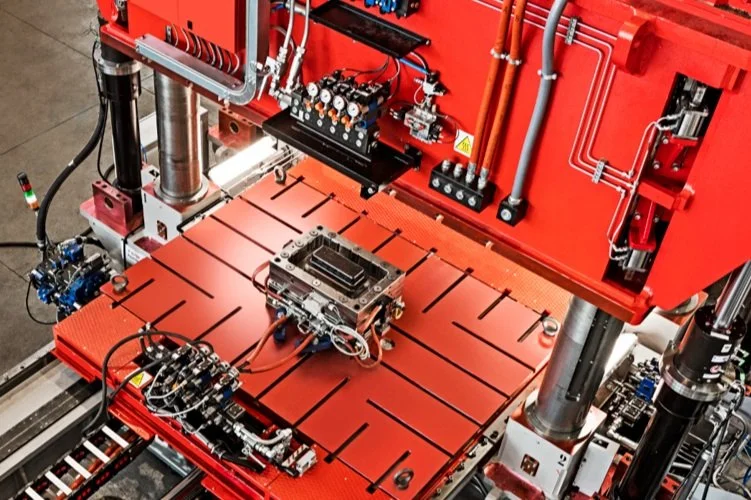The solutions developed within the project’s spec will be deployed in
2 demonstrators, ensuring the integration, commissioning, and set-up of the open innovation platform.
Carbon Fibre Sheet Moulding Compound (SMC) Components For Automotive
Metal Additive Manufacturing for Construction
PILOT 1
Metal Additive Manufacturing for Construction
In a typical steel-framed building, much of the material is often underutilised and at a high economic and environmental cost.
This use case aims to increase structures’ efficiency through hybrid construction, combining traditional rolled steelwork with a small amount of additively manufactured material. The proposed hybrid construction concept can be used for beams and frames,
where metal additive manufacturing can improve structural efficiency by adding material only where needed on a conventional I-section profile. This results in a 35% increase in load-carrying capacity with only a 10% increase in material use. Similarly, when it comes to trusses optimisation, WAAM (Wire Arc Additive Manufacturing) can create trusses with more complex shapes while still using conventional materials, saving time and lowering costs.
▪ Fast-running topology optimisation techniques to generate efficient joint geometries.
▪ Design of an optimised and certified metal component, utilising data interoperability, thermomechanical models, and manufacturing planning strategies.
▪ Adaptations to the WAAM process pipeline.
▪ Hybrid construction solution by combining AM (Additive Manufacturing) with traditional rolled steelwork and taking advantage of AM to build local features that increase load-carrying capacity.
▪ Real-time re-optimisation to tackle thermal distortions during the printing process.
Carbon Fibre Sheet Moulding Compound (SMC) Components For the Automotive Sector
The SMC process, a sustainable Out of Autoclave (OoA) method, is prominently deployed in manufacturing exterior parts in the automotive industry.
In this application, Marelli is leading the development of a new lightweight upper composite suspension control arm with an expected mass saving of around 30% compared to the normal production component.
PIONEER seeks to revolutionise the automotive industry by significantly decreasing reliance on extensive physical testing. This initiative aims to streamline product development, saving both time and costs.
A key tool in PIONEER’s strategy is the digital twin of the production process, suitable for developing and testing new components. It allows optimisation of manufacturing processes, fine-tuning of mould designs, and adjustments to components changing the boundary conditions.
To this end, PIONEER introduces a sophisticated simulation workflow designed to predict structural properties, effectively diminishing the need for extensive physical testing. This comprehensive process unfolds in 5 steps and allows for real-time evaluation, comprising:
confined tape orientation modelling, essential for an accurate representation of the orientation of the fibres,
this model is integrated with a unified flow model covering the different flow regimes,
modelling fibre concentration evolution explaining fibre dilution,
modelling the interactions between the charges and the mould, and
addressing the modelling of diverging flows at part junctions.
PILOT 2
▪ Control of Closing Force/Pressure: Significantly impacting the manufacturing costs. Optimal pressure and closing force require careful consideration of initial charge positions.
▪ Temperature Control Inside the Mould: Ensuring the desired temperature for proper material processing.
▪ Material Flow-Induced Challenges: Mitigating challenges such as fibre reorientation, weld lines, thin walls, and shrinkage during cooling.
▪ Process Parameters Optimisation: Establishing cross-correlation to modify process parameters based on material conditions.


